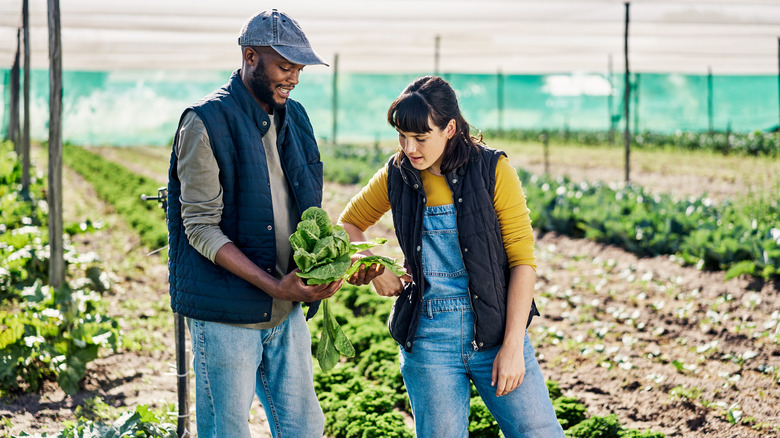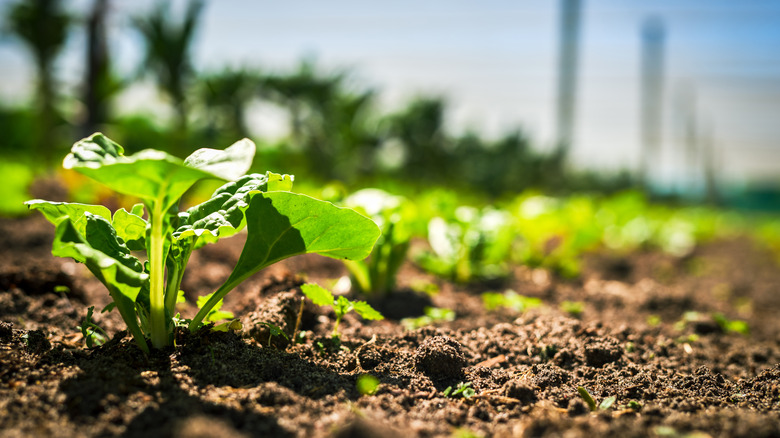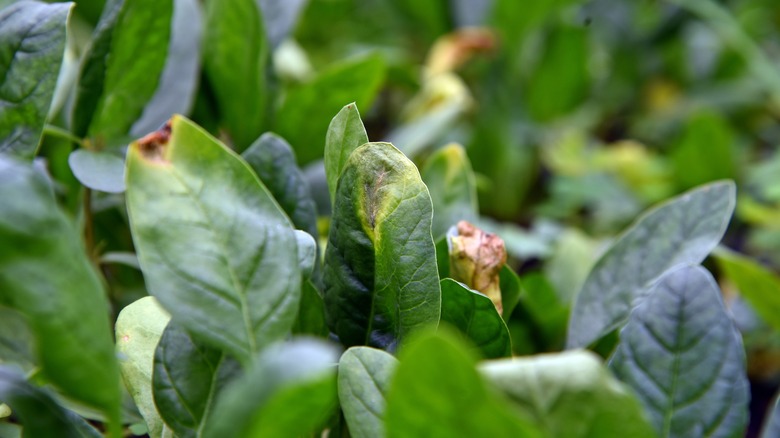Common Gardening Mistakes That Are Hindering Your Spinach Harvest
Growing spinach in a garden can be a rewarding experience as it connects gardeners to the joy of cultivating their food in their own backyard. Moreover, cultivating spinach is environmentally friendly, contributing to reduced carbon footprints associated with commercial agriculture. Not to mention, spinach's versatility and ability to thrive through much of the year make it a convenient and accessible crop for gardeners, offering a continuous source of nutrient-rich greens with minimal effort. That being said, as with growing any vegetable, there are a number of common gardening mistakes such as not providing adequate sunlight and proper watering that can contribute to a disappointing harvest.
The right watering schedule and adequate sunlight are crucial for successful spinach cultivation. Spinach requires consistently moist soil, so watering should be regular to prevent drying out, but the soil should not be waterlogged to avoid root rot. The correct approach involves watering deeply, ensuring the soil remains consistently moist, especially during dry periods. Signs of inadequate watering include wilted or yellowing leaves.
Spinach thrives in cool-season conditions with at least six hours of sunlight daily. Inadequate sunlight can result in leggy, stretched plants with smaller leaves. To overcome this, plant spinach in well-lit areas for maximum sun exposure throughout the day. Adjusting the garden layout to maximize sunlight exposure and using reflective materials can also enhance light availability, promoting healthier spinach growth. Monitoring soil moisture and observing leaf color, and paying attention to plant structure are key to identifying and rectifying issues related to watering and sunlight.
Soil issues and how to fix them
To identify potential issues, regular monitoring of the spinach crop is essential. Look for crowded plant spacing, smaller leaves, and any signs of nutrient deficiencies, such as yellowing or discoloration. Soil testing can provide insights into nutrient levels and composition to inform gardeners how to optimize conditions for a robust spinach harvest.
Soil issues play a significant role in the success of a spinach harvest, with overcrowding and poor soil quality being primary culprits that can hinder optimal growth. Overcrowding occurs when spinach plants are planted too closely together, leading to intense competition for essential resources. This results in stunted growth, reduced leaf size, and diminished overall yield. Symptoms of overcrowding include crowded, spindly plants with smaller leaves and a generally unhealthy appearance. To address overcrowding, ensure proper spacing when planting spinach seeds (at least 2 inches apart) or seedlings (about 4-6 inches apart).
Poor soil quality exacerbates these problems, as spinach thrives in well-draining, nutrient-rich soil. Inadequate soil can lead to nutrient deficiencies, impacting the plant's ability to develop strong roots and produce healthy leaves. Signs of poor soil quality may include yellowing leaves, slow growth, and an increased susceptibility to pests and diseases. You can address poor soil quality by amending the soil with organic matter, such as compost, to improve fertility and structure. Regularly mulch to retain moisture and suppress weeds, contributing to an overall healthier soil environment for spinach growth.
Care issues and how to resolve them
Care-related issues can significantly impact the success of a spinach harvest. Improper timing, such as planting spinach too late in spring or too early in fall, can lead to poor germination and premature bolting, affecting overall yield. Symptoms of timing issues include uneven growth, spindly plants, and an increased tendency for the spinach to bolt. Gardeners should follow recommended planting schedules and the USDA Plant Hardiness Map to determine the best time to plant spinach in their climate.
Skipping thinning is another care mistake that can impede spinach growth. Thinning involves removing excess seedlings to provide adequate spacing for healthy plant development. Failure to thin can result in overcrowded plants, stunted growth, and smaller leaves. Symptoms of inadequate thinning include crowded plant beds, reduced air circulation, and overall weaker spinach plants. Burpee notes thinning should be performed when seedlings have developed a few true leaves, allowing the remaining plants space to thrive.
Ignoring pests and diseases is a critical care issue that can devastate a spinach crop. Pests like aphids and diseases such as downy mildew can damage leaves and impact overall plant health. Symptoms include yellowing, distorted leaves, and visible signs of pests or fungal growth. Regular monitoring and prompt intervention with organic or chemical controls when necessary are essential to mitigate the impact of pests and diseases. By addressing these care-related issues, gardeners can foster healthier, more productive spinach plants and ensure a successful harvest.


